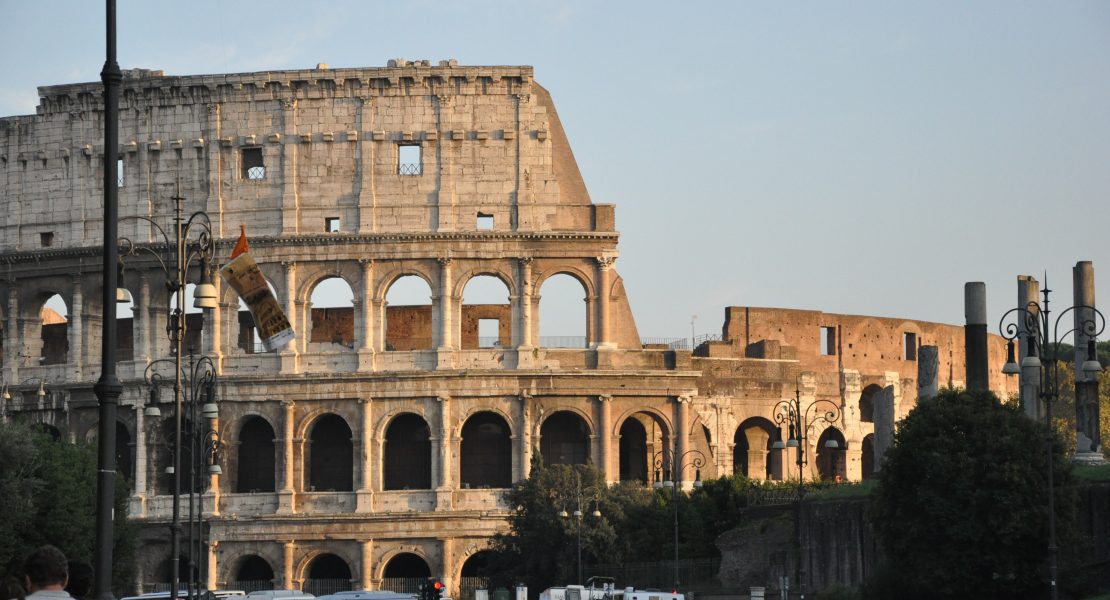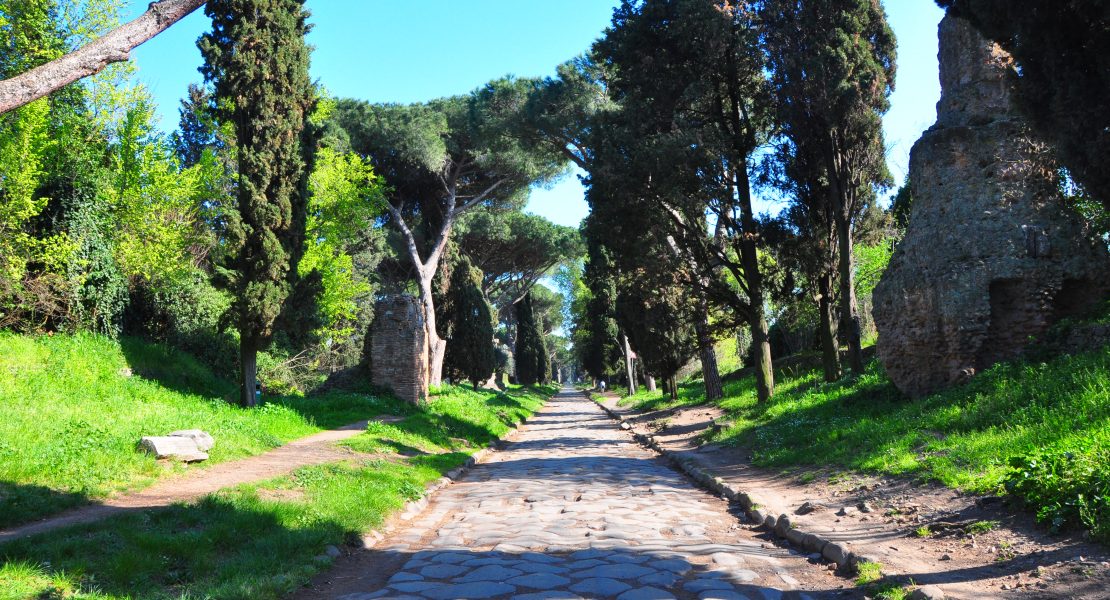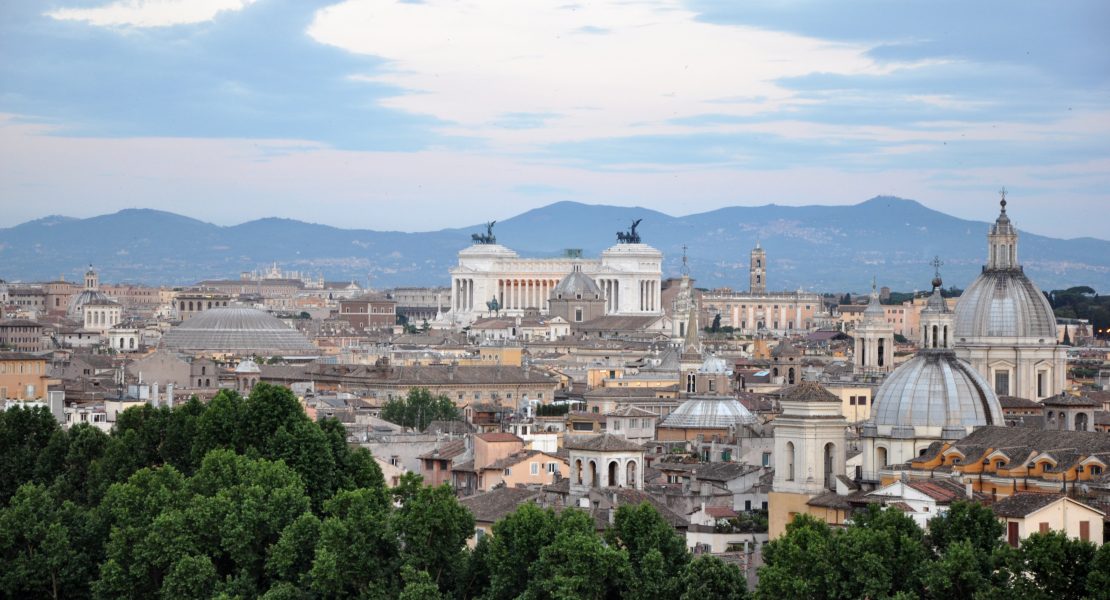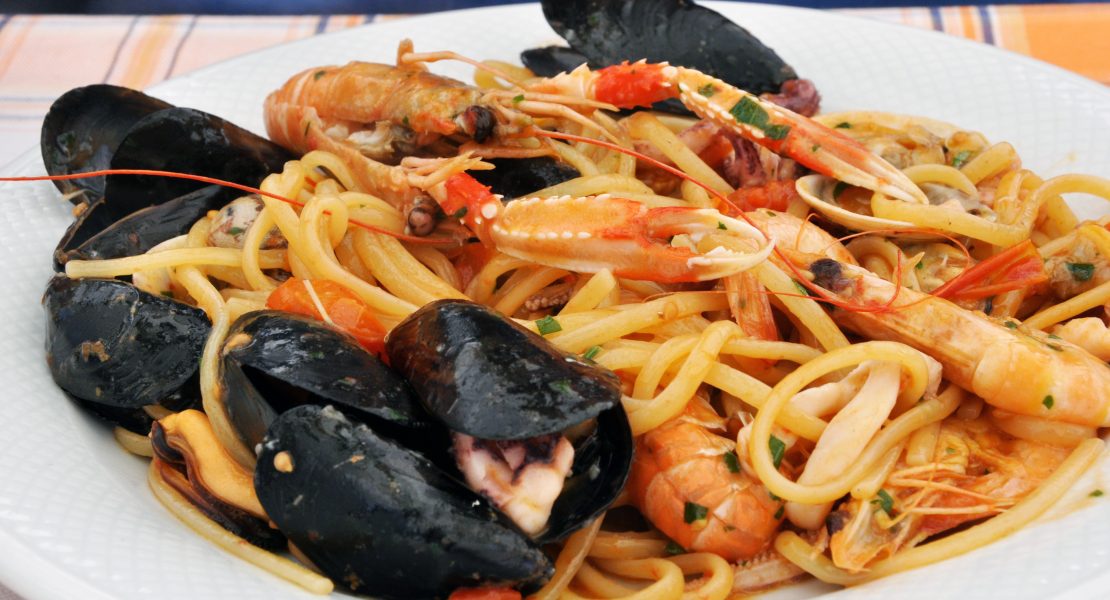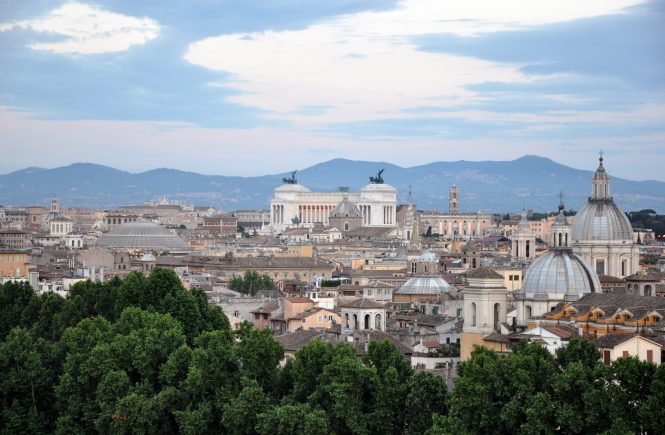Featured on Radio Show “How to Tour Italy”
Tired of reading my tips and tricks to Rome and Italy—and want to sit back, relax, and listen instead? Then tune into my half-hour chat with Anthony Capozzoli on the radio show "How to Tour Italy." From the best way to experience Umbria in a day trip, to my take on Italian graffiti, to (most importantly) why funky-looking Italian lemons don't bother either of us, but the sight of puffy, pretty gelato does, we covered a lot of—very varied—ground.
Here are some of the other great guests Anthony has had on his show.
Anthony, it was a pleasure to appear on your show, and I look forward to chatting with you for more episodes in the future!
Rain in Rome? Five Reasons Not to Mind, in Pictures
There are a lot of wonderful reasons to visit Rome in autumn. And while most people might not think of rain as one of them… well, I do.
Sure, it's never pleasant to suddenly get dumped on while you're, say, walking through the already-muddy ancient forum without an umbrella. But Rome's rain doesn't usually last for long. And the moment it slows down, the moody clouds and sudden glimpses of sunlight mean that the city might just be at its most beautiful.
Here's proof.


See? I told you rain in Rome wasn't all bad. Just don't forget your galoshes!
Want more tips about what to do in the Eternal City? Check out The Revealed Rome Handbook: Tips and Tricks for Exploring the Eternal City, available for purchase on Amazon, below, or through my site here!
Three Top Sights in Rome… That Must Be Booked in Advance
For some of the best sights in Rome, you don't need to worry about reservations, or tickets, or a booking. You can waltz right into the Pantheon, explore Rome's lovely small churches, or gawk at Rome's archaeological treasures in the Palazzo Massimo without so much as a booking.
But some of Rome's coolest experiences do need to be planned in advance. How you'll get into the Colosseum or Sistine Chapel without standing in a 3-hour line, for example. (More on that in a future post). And some actually need to be booked.
Yes, you heard me. In the land of la dolce vita and 2-hour lunch breaks, there are tourist sights you can't get into unless you have a reservation.
And here they are.
St. Peter’s tomb
The necropolis under St. Peter’s Basilica—which includes what’s thought to be the tomb of St. Peter—makes a super-cool visit for anyone, not just pilgrims. The ancient tombs here are both pagan and Christian, many still with elaborate mosaic decoration; it gives you a great idea of what a 1st-century, above-ground cemetery would have looked like.
But because the archaeological site is delicate, only 250 visitors can enter per day, on tours only, and must book in advance. Note that visitors also must be at least 15 years old.
To book, email scavi@fsp.va or fax +39 0669873017. You also can ask at the Excavations Office when you’re in Rome, but because these tours tend to book out weeks ahead of time, I wouldn't wait until then to do so. Make sure to include the number of participants, names, which language you need, how to contact you, and the period when you’re available to attend.
Borghese Gallery
This is my favorite art museum in Rome, and it’s absolutely a must-see. To keep it a pleasant experience, however (and to protect the art), the museum limits the number of people who can be inside at any one time. Entrances are at 9am, 11am, 1pm, 3pm, and 5pm, daily except Monday. Book at least a week in advance in high season.
To book, either go to galleriaborghese.it and click on “Tickets reservations” or call +39 0632810. There is a €1.50 surcharge per ticket for booking online. You also can automatically get a reservation by booking a tour with a reputable tour company.
Palazzo Valentini

If the Borghese is my favorite art museum, this is my favorite ancient, underground site. (Although that sounds quite specific I can assure you that, in a city chock-full of them, it’s not!). Smack in the center of Rome, not far from the Forum, the 16th-century palazzo sits on top of two opulent, ancient Roman villas. An (enthusiastic! and dramatic!) automated tour takes you through them as—drumroll, please—light shows “recreate” what they would have looked like.
You can book online at palazzovalentini.it (just make sure you pick an English, “inglese,” tour!). Or you can call +39 0632810, or make an appointment in person. However, particularly in high season or if you have limited time, I’d recommend booking this at least a week in advance.
Five Things I Love About the Fall in Rome

From the time I was a little girl, the fall has been my favorite season. It's the time of my birthday, of a fresh start to a new (school) year, of finally being able to cozy up in sweaters and tromp through dry leaves and smell woodsmoke in the air. While I'll always be partial to the glorious falls of New England, the autumn in Rome is pretty wonderful, too.
Here are five things I'm most excited about this fall in Rome.
There's something special about the light in Rome in autumn. Hard to show—and even harder to describe—it's a kind of golden glow that covers everything, and not just in the evening. When I first moved here, it was an October. And this light was one of the things about Rome that made me fall in love.
When it comes to fashion, the fall is when Romans are in their element… thanks to the unpredictability of the elements themselves. The cooling temperatures and flash rainstorms mean that, to keep warm and ward off such horrible made-up diseases as la cervicale, every self-respecting Italian has to bundle up with scarves and coats (and sweaters and and gloves and hats). Even if it's an unseasonably warm day. The impressive part? While I feel like an overstuffed snowman in my layers, they manage to make all of that bundling up look nothing short of stylish.
When it rains in Rome—which it starts to, like clockwork, every September—it's rarely the ongoing, trickling, depressing rain you get in, say, London. Instead, the rain pours down hard. And then, just as suddenly, stops. The result? Dramatic, Turner-worthy skies and a gloss over everything that makes the city that much more beautiful—and photogenic.
Rome's summer heat always sucks the appetite right out of me. But as temperatures drop, tucking into the simple-but-stick-to-your-ribs staples of Roman cuisine, like pasta carbonara (above, from Da Danilo)—isn't just palatable again. It's glorious.

I'm such a New England girl, it took moving to Rome for me to realize that, yes, trees change color in other places, too. In Rome, one of my favorite places to wander in autumn is the Villa Borghese, an oasis of trees, and autumn colors, in the city center.
Looking for Glass in Rome? Forget Murano—Head to Monti
You don't need to head to Murano for handcrafted glass in Italy. When in Rome, just make your way to Monti—and to Anna Preziosi's studio.
Anna's tiny workshop, located a 10-minute walk from the Roman forum, is filled with gorgeous glass plates, vases, decorative baubles, and more. It's become my go-to to find the perfect, elegant gift from Italy.
And yes, all of the glass is handmade right there in the studio… by the lovely Anna herself.
Especially given the quality of the glass and the fact that it's handmade, the prices are excellent. For as little as €15, you can scoop up an ashtray or small dish, while you're looking at €75 and up for a large, decorative plate.
Have I mentioned that the pieces are gorgeous?

Studio Silice is located at Via Urbana 27, in the heart of Monti. While you're there, don't forget to check out the other great shops and artisanal stores on Via del Boschetto!
Consulting Session Sale (Happy Birthday, To Me!)

Since this spring, I’ve been offering one-on-one consulting sessions on travel to Italy.
And I can’t tell you how good it makes me feel to help people have rewarding, fun trips to Rome. That’s why, for my upcoming birthday (September 14!), I’ve decided to give a small “gift” to anyone thinking of booking a session with me: a $15 discount.
(This isn’t quite as strange as it sounds. You know how, in the U.S., the birthday girl or boy gets treated to dinner and drinks? Here in Italy, it’s the opposite. I’m supposed to treat everyone else!).
So, from now until September 14, you can book a 1-hour, one-on-one consulting session with me for $60 instead of $75. (Note: That does not mean we have to actually hold the session in the next two weeks. We can have it whenever you want it. Next spring, even).
By the way, since I’ve been doing this for a few months now, some clients already have gone to Italy, used my suggestions, and returned. Here’s some of the most recent feedback that’s made me blush:
“Thanks again for the consultation. It made all the difference for us. Whenever we were thinking outside of the box, we’d remind ourselves, “what did Mandy say about this?””
“Dear Amanda, THANK YOU for everything. We really enjoyed speaking with you and found your services exceptional… Thanks so much for that suggestion [for a restaurant in Testaccio]—we never would have found it without you… I can’t thank you enough for all your wonderful suggestions. You are a smart girl to have relocated to Rome! We’re already discussing our next trip.”
How can that kind of feedback not make me feel great?
For my birthday, help me do what I like doing… and book a session! (Here’s more information on what advice, tips and tricks you can get from your 1-hour consulting session).
The Story of One Artisanal Outfit in Rome
This summer, I decided I needed two new pieces: a comfortable dress that I could wear as easily to the beach as to dinner. And a new wallet, since my old one was falling apart.
Instead of turning to a chain or department store, as I did in the past, I headed to two of my favorite Rome artisans. Each one handcrafted me exactly what I wanted… within just a couple of days. And the prices were reasonable—especially considering how much you'd usually pay to be personally involved in a piece's design.
First: the wallet. For those who've followed my artisanal shopping adventure in Rome, it might come as no surprise that I headed straight to Armando Rioda.
I chatted with my buddy Vinicio Reggi, one of the owners, as we figured out what kind of wallet I wanted. He handed me several they'd already made to help me figure out size and style; when we had the basics figured out, he started sketching on a piece of paper. "You could have an extra pocket here, if you want," he said, drawing, "and the credit cards here. How many slots for them would you want?".
When we had the design figured out, it was time to choose the leather. He pulled out one bolt after another—camel, dark blue, red, black. I said I wanted dark brown, and for that, he had the perfect choice: a dark brown leather that was stamped to look like alligator skin.
When we'd finished designing my ideal wallet, he said it would be ready in just a couple of days. At the end of the week, I went to get it… and couldn't have been happier with the result.
Obviously, I was pretty pleased.
Next stop: finding a simple, travel-friendly dress. For that, I headed to Le Nou, located on Via del Boschetto (one of the best shopping streets in Rome!).
As usual, the store was sparse: just a few dresses and shirts hung on the rack. But the patterns change frequently here, and this time, I saw exactly the design I wanted. When I tried it on, it fit perfectly. (If it didn't, one of the two seamstress-designers who runs Le Nou assured me they could alter it to my measurements—at no extra cost).
The only problem was the color, a light green that didn't exactly complement my olive skin. So, instead, I was directed to a few bolts of cloth, and told to pick whichever one I wanted. I went with navy blue.
I left my name and phone number, and the girls told me they'd text as soon as the dress was ready. Less than 24 hours later, I received a message. The dress was finished. Simple and classic, it was exactly what I'd wanted. The cost? €35.
I told you: You've gotta love Rome's artisans.
The details from outfit photo, at top: Handcrafted wallet from Armando Rioda, €200. Handmade dress from Le Nou, €35. Handmade suede espadrilles from Barrila Boutique, €59. The process of being involved in the design of a piece you're buying, and of supporting Rome's artisans? Priceless.
Rome Neighborhoods: How to Know Where to Stay (Updated for 2018)
Figuring out the neighborhoods of Rome can be a little confusing. Even though it’s a big city, most tourists spend most of their time in the centro storico — and that’s where most hotels are, too.
But simply looking for accommodation in Rome’s “historic center” isn’t enough. That’s because the center is divided by neighborhoods, some of which feel pretty different from the next.
So you’ll need to know not only that you want to stay in the historic center… but which neighborhood to stay in in the centro storico, too.
What is the centro storico?
If you want to stay in the centro storico, you first need to know… what is the centro storico.
Technically, the centro storico is the area of Rome that’s bordered by the 3rd-century Aurelian walls and by the mura gianicolensi, which include the Vatican walls. There aren’t many good maps online that have the walls clearly delineated. This is one of the best I could find.
The thin, black line running around the entire center is the Aurelian walls. (You can find it by looking at the square marked “Castro Pretorio” in the upper right-hand part of the city). Although the neighborhood and monuments are all ancient Roman, you can get some perspective by looking for the Colosseum (a little ring almost right in the center), Circus Maximus (to the southwest of the Colosseum), and the Tiber.
This area—which includes not only the Colosseum and forum, but the Spanish Steps, Piazza del Popolo, Piazza Navona, Pantheon, and Vatican — is the historic center. And if you’re staying in Rome, this is where you’ll probably want to stay. (Nota bene: There are, of course, many other, perfectly pleasant neighborhoods in Rome outside of the historic center. But I’m sticking to the centro storico here just because it tends to be most conveneint for most people).
Now, for the neighborhoods. (I recommend opening a tab with Google maps and keeping it handy so you can refer back and forth!).
The neighborhood where… everyone stays: the heart of the centro storico
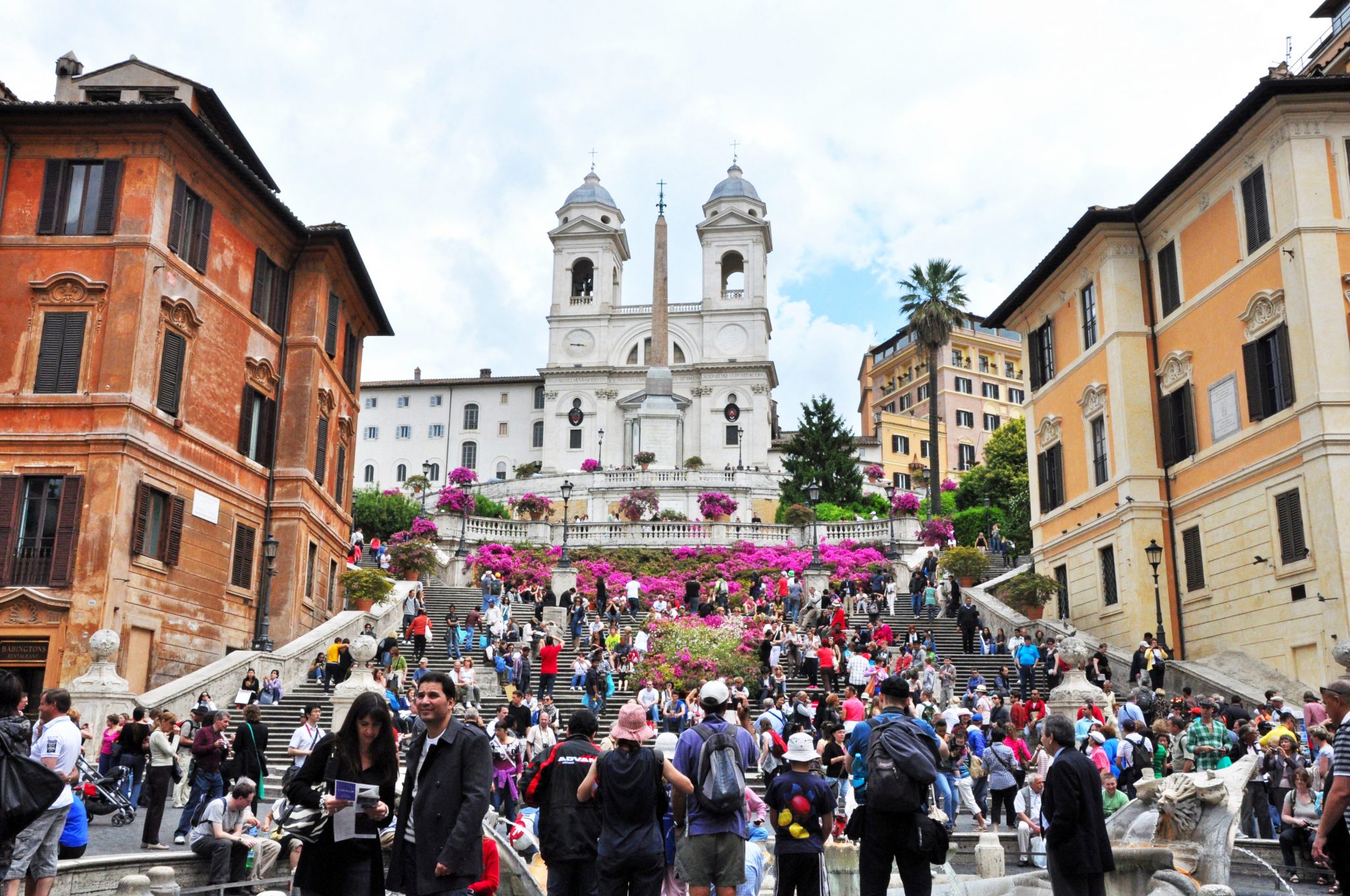
This isn’t technically a neighborhood, but I’m using it as shorthand for the central area that most people think of when they think “Rome”—the triangle with Piazza del Popolo in the north, the Spanish Steps and Trevi Fountain to the east, and the Pantheon and Piazza Navona to the west.
This stunning area is home to cobb where most people want to stay. Of course, it’s also where hotels are the most expensive, where the streets crowd with tourists and shoppers, and where 99% of restaurants are overpriced and mediocre. On the other hand, every corner looks like a postcard. Hey, you win some, you lose some!
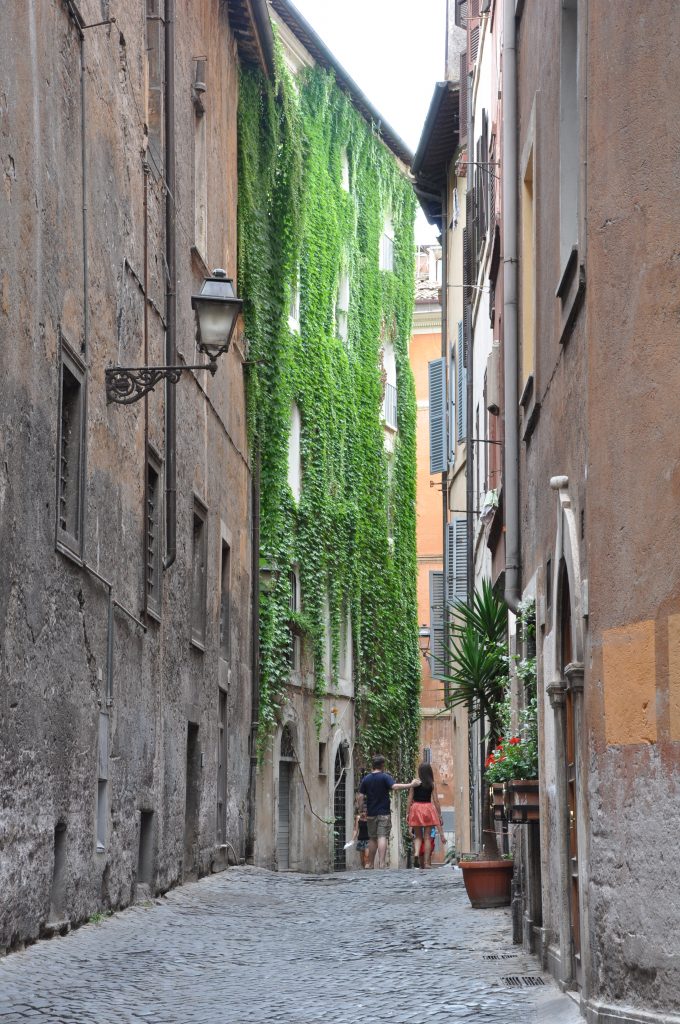
The neighborhood where… it feels most big-city: Via Veneto, Piazza Barberini and Repubblica
This northeastern corner of the historic center is home to the winding Via Veneto. The street is famous for its hotels—although most seem, at least to me, to be huge and overpriced. Meanwhile, the rest of the area, especially near the Barberini and Repubblica metro stops, feels like a big city.
For the most part, forget cobblestones and quaint churches. This is where the buildings are tall, the streets wide, and the passersby businesslike.
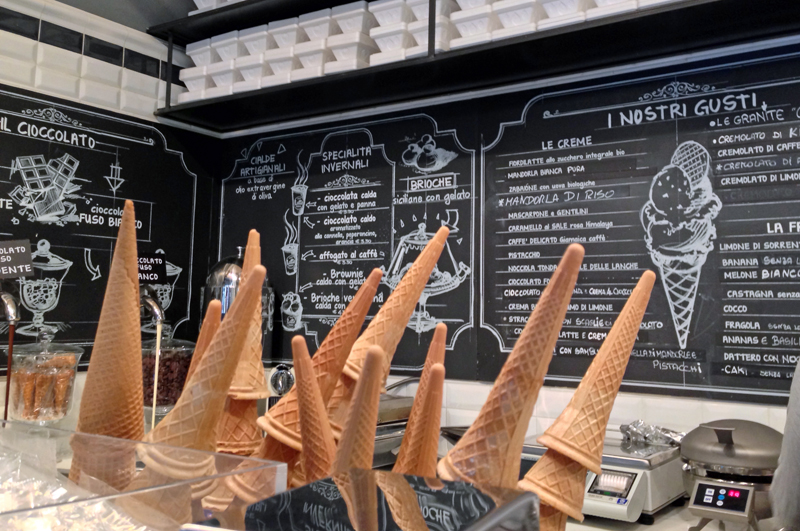
Termini and the Esquiline
Although some hoteliers diplomatically call this neighborhood “Monti,” anything from Piazza Vittorio Emanuele to Santa Maria Maggiore and northeast to the Termini train station is, more properly, the Esquiline hill. In general, the neighborhood here tends to feel gritty and look grungy. This is where you’ll see immigrants hawking counterfeited purses, homeless people huddling in corners, and garbage littering the street.
It’s also home to many of Rome’s cheapest hotels, hostels and B&Bs.
The area tends to be perfectly safe. Rome is, as a whole, much safer when it comes to muggings and violent crimes than pretty much any city in America, as well as Dublin, London and Paris. But it may not be what you imagined when you first pictured Rome. Also keep in mind that, while it may seem very convenient to stay near the train station, and while that means this area is well-connected by metro and bus, it’s not within easy walking distance of most of the major sights, like the Pantheon and Piazza Navona.
Monti
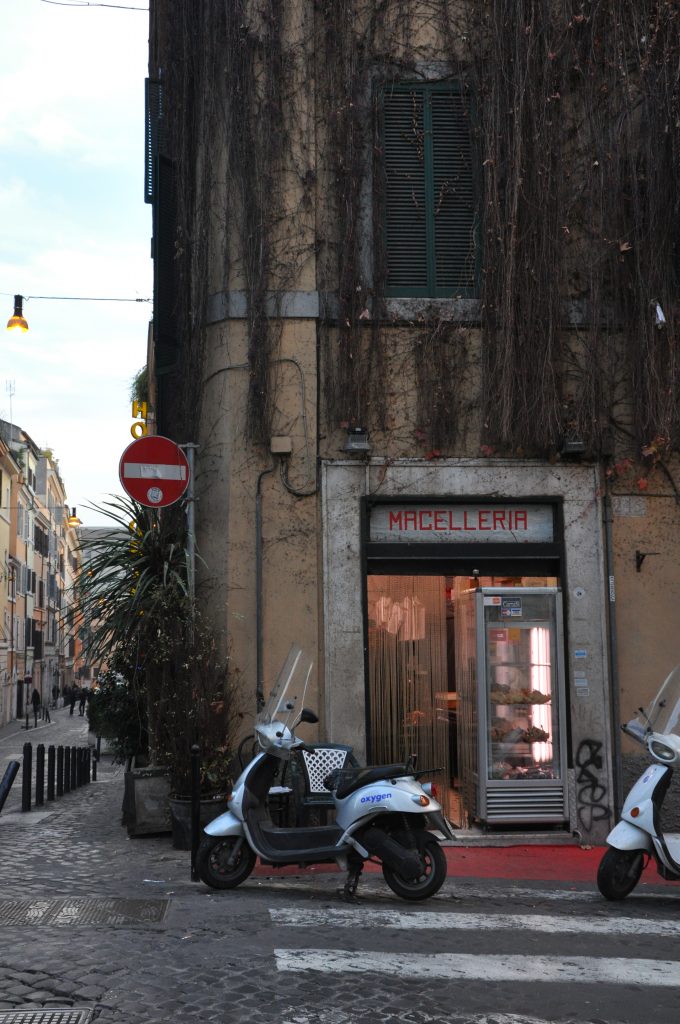
In ancient times, this rione was the red-light district, home to gladiators and prostitutes (Julius Caesar even moved there to show he was “one of the people”). Today, it’s a gorgeous little neighborhood filled with medieval palazzi, cobblestoned streets, and an eclectic mix of traditional trattorie and hip boutiques.
If you want to stay here, look at the area bordered by Via Nazionale (to the west), Santa Maria Maggiore (to the north), the Colle Oppio park (to the east), and the Roman forum and Colosseum (to the south).
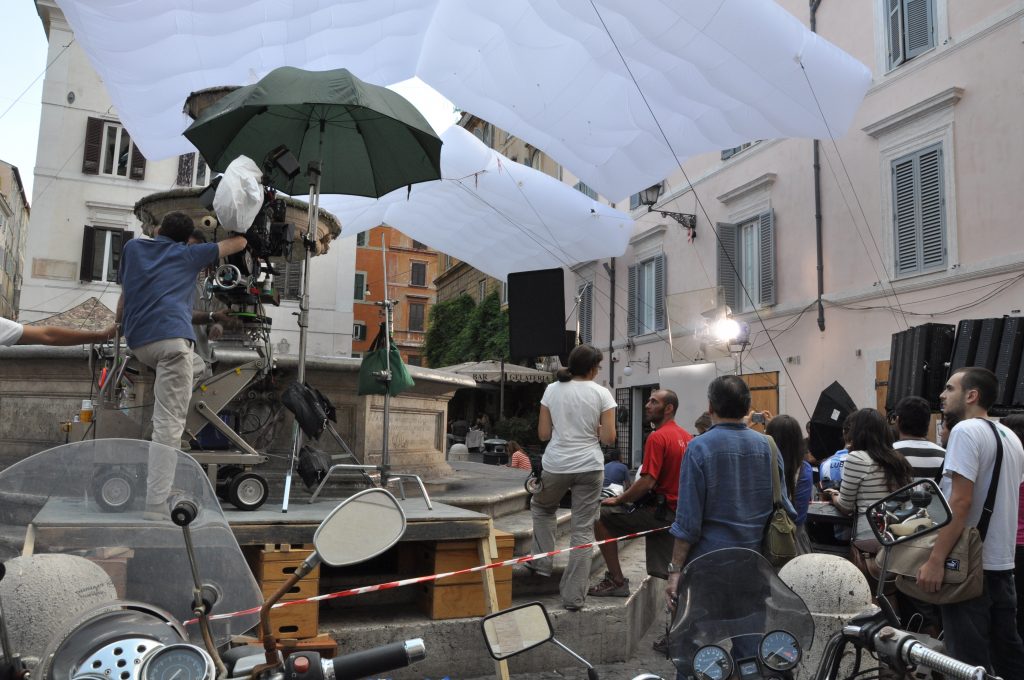
Celio
Further southwest of Monti is Celio, another rione with a strong history. The couple of blocks right around the Colosseum tend to be touristy and busy during the day, but the rest of this area, which stretches southeast to the Basilica of San Giovanni in Laterano, feels quiet and residential. I lived here for four years, and I still think it’s one of the most underrated areas of the city.
Aventine
This hill, just south of the Circus Maximus, is home to some of the loveliest streets and homes in Rome. Its small size and exclusivity mean there are few hotels and B&Bs here. It also doesn’t feel like it’s “in the middle” of anything, thanks to its greenery and the fact that it’s at least a 15-minute walk to most of the major sights.
Forum Boarium
This neighborhood is really a sliver, tucked just to the south and west of Circus Maximus. The neighborhood has some wonderful sights — including the Church of San Giorgio in Velabro, the Arch of Janus, and the Church of San Nicola in Carcere — and it’s just a three-minute walk to the Jewish Ghetto and Piazza Venezia. It’s also tranquil, lovely and off the beaten path.
Campo dei Fiori and the Jewish Ghetto
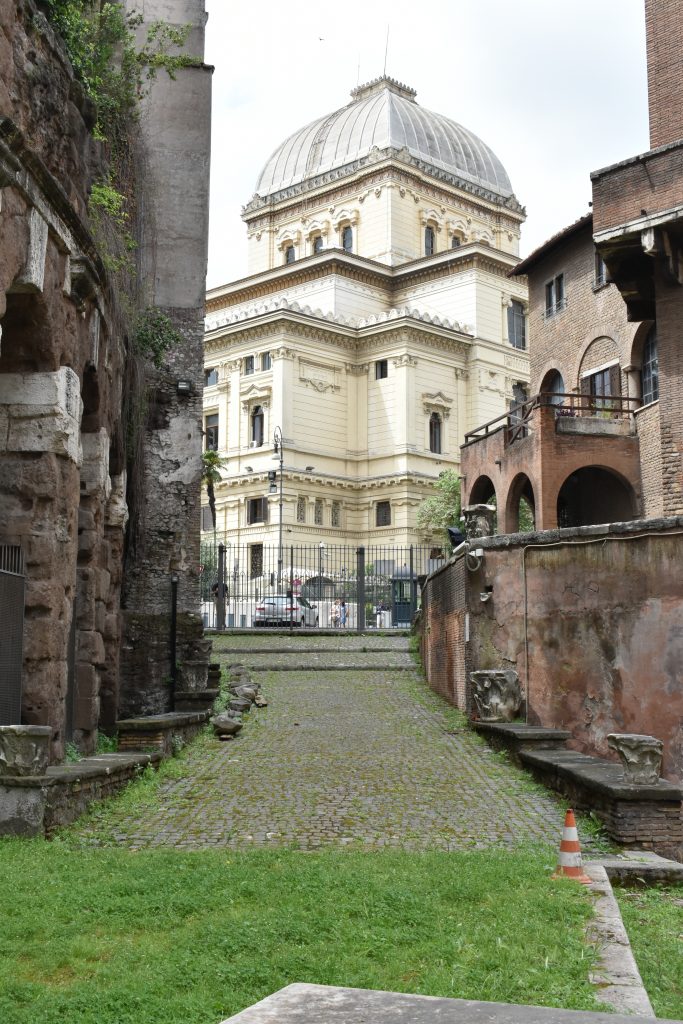
From Piazza Venezia to the Tiber, you’ve got beautiful ancient ruins, the Jewish Ghetto, lively Campo dei Fiori, and my favorite piazza in Rome, Piazza Farnese. This district has the atmosphere (and history) of the area around Piazza Navona and the Pantheon, with half of the people.
Trastevere
Just over the Tiber from Campo dei Fiori and the Ghetto is Trastevere, an atmospheric district that, today, is as likely to be home to American study-abroad students, expats and wealthy Italians as the working-class and bohemian Romans who once lived here. Still, the neighborhood remains charming. There are plenty of corners and tiny streets where life is still lived much as it would have been decades ago.
Prati
If you find the center of Rome’s centro storico too confusing and chaotic, consider Prati. This area around the Vatican, just over the river from sights like Piazza Navona and Piazza del Popolo, was laid out in the 19th century, so its grid system and wide boulevards look more continental and, well, organized than the rest of Rome.
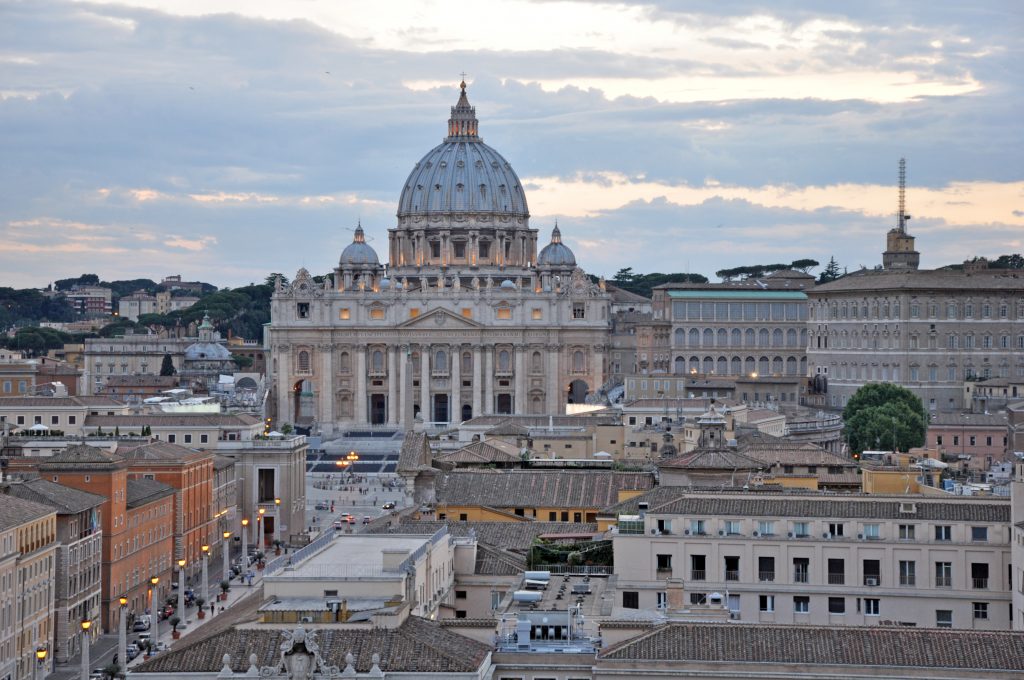
The area right around the Vatican museums and St. Peter’s is extremely touristy. But once you get a little farther away, authentic restaurants and the rhythm of daily life in Rome abound. It’s also easier to find cheaper accommodation here.
Testaccio
Just south of the Aventine, the Testaccio quarter is one of the least touristy in Rome — and has some of the best restaurants and bakeries in the city. The ancient area, which gets its name from “Monte Testaccio,” a hill that literally was created because it was a dump for ancient Roman amphorae, can feel more modern and gritty than the center of the city. But it’s perfectly safe, cheaper than the center, and convenient: Thanks to the metro and lots of buses here, you’re just 5 to 15 minutes away from Trastevere, the Colosseum, and the heart of the historic center.
Also: six of the best trattorias in Rome, how to act like a local and where to find that perfect souvenir or gift in the city.
If you liked this post, you’ll love The Revealed Rome Handbook: Tips and Tricks for Exploring the Eternal City, available for purchase on Amazon or through my site here! I’m also free for one-on-one consulting sessions to help plan your Italy trip.
Spending August in Rome? Plan Your Attack

I've written before about ferragosto, the August holiday when shops shutter, restaurants close, and Italians flee for the hills (or beaches).
But it's time for another reminder.
That's because I think there's a big misconception about ferragosto: Primarily, that it's only a couple of weeks long, and that it starts on Aug. 15. In reality? Every business owner (and family) decides when to take their holiday, and for how long. So I've seen closures ranging from mid-July to early August, from early August to early September, or for just a couple of days in mid-August. (The popular restaurant shown above, Checchino dal 1887, is closed from Aug. 5 to Sep. 3, for example).
How much you'll be affected by ferragosto also depends, very much, on the neighborhood you're in. The area right around the Spanish Steps and Piazza Navona continues to hum with activity. But center's more "authentic" quarters, particularly Monti, Testaccio, and Trastevere, are starting to feel like ghost towns. And since those tend to be where the city's best restaurants and most interesting shops are located, that's a challenge for travelers.
So if you have to come to Rome in August (or early September), be prepared to have a plan of attack.
Here's a good listing of restaurants open in August 2012 from Katie Parla and another from Tavole Romane, and here's a general guide to what to expect in Italy in August that I wrote for Walks of Italy. And, just so it's not all doom-and-gloom, here's a much more optimistic post from the lovely Kathy McCabe on why she actually likes traveling to Italy in August (crazy, Kathy, crazy!).

